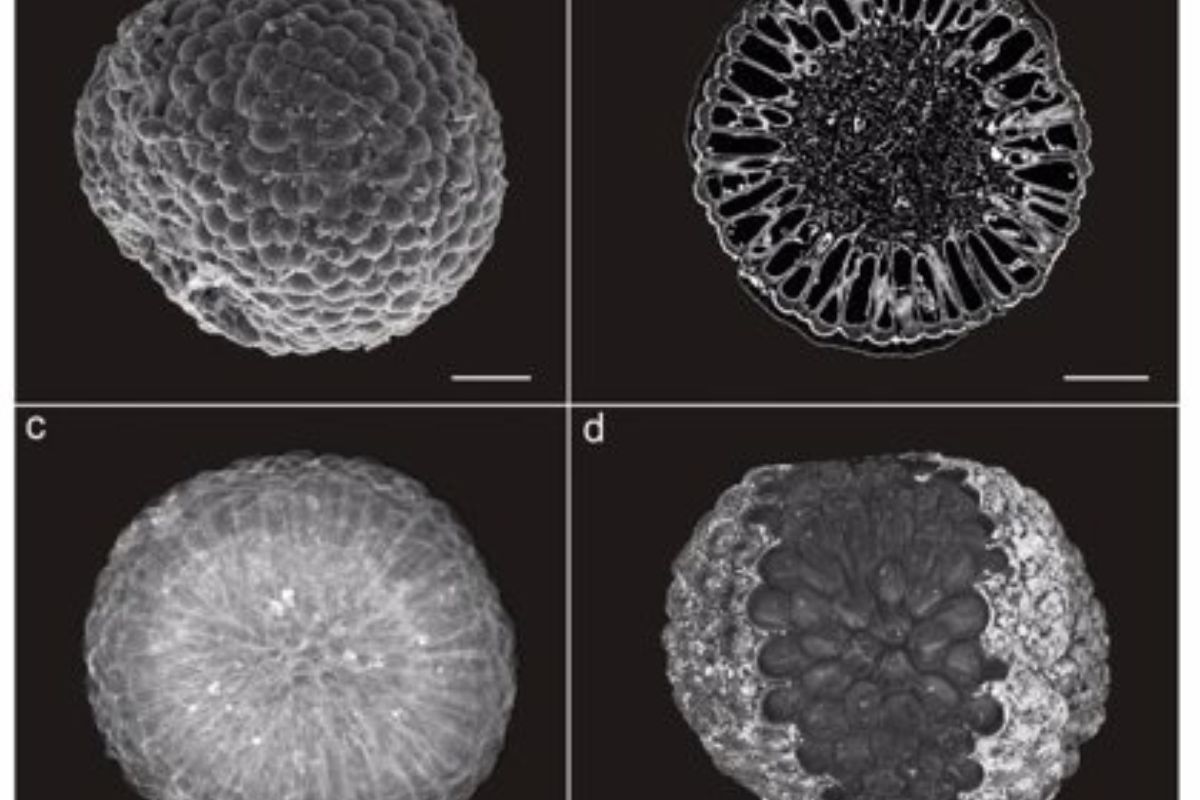Police recover stolen 50-million-year old fossil from IITF, one nabbed
A 50 million-year-old Gastropod Fossil, which was stolen from India International Trade fair (IITF) earlier this month, was recovered with the arrest of an individual.
In the past 20 years, this geological formation has yielded important fossil species documenting the end of the Ediacaran Period 541-million-years ago.

Image source (Twitter)
Paleontologists have identified a new genus and species of algae called Protocodium sinense which predates the origin of land plants and modern animals and provides new insight into the early diversification of the plant kingdom. Discovered at a site in China, this 541-million-year-old fossil is the first and oldest green alga from this era to be preserved in three dimensions, enabling the researchers to investigate its internal structure and identify the new specimen with unprecedented accuracy.
Discovered at a site in China, this 541-million-year-old fossil is the first and oldest green alga from this era to be preserved in three dimensions, enabling the researchers to investigate its internal structure and identify the new specimen with unprecedented accuracy. The study is published today in BMC Biology, opening a window into a world of evolutionary puzzles that scientists are just beginning to unravel.
Advertisement
“Protocodium belongs to a known lineage of green algae and has a surprisingly modern architecture, showing that these algae were already well diversified before the end of the Ediacaran period,” says co-author Cedric Aria, postdoctoral fellow in the Department of Ecology & Evolutionary Biology in the Faculty of Arts & Science at the University of Toronto and based at the Royal Ontario Museum (ROM). “Its discovery touches the origin of the entire plant kingdom and puts a familiar name on the organisms that preceded the Cambrian explosion over half a billion years ago, when the world’s first modern ecosystems emerged.”
Advertisement
The newly discovered Protocodium fossils were found by a team led by Hong Hua, professor of geology, and including Shu Chai, postdoctoral researcher, both of Northwest University, Xi’an, China. It is part of the Gaojiashan biota, the name given to a significant group of exceptionally well-preserved fossils, at the Dengying Formation in the southern Shaanxi Province.
In the past 20 years, this geological formation has yielded important fossil species documenting the end of the Ediacaran Period 541-million-years ago.
Organisms and their parts that do not originally absorb minerals — unlike shells or bones — require exceptional conditions to be preserved. In this case, the whole fossils and their fine cellular details were preserved in three dimensions due to the replacement of the original organic material by phosphate.
This mode of preservation allowed the researchers to use various electron and X-ray microscopy techniques to virtually slice the fossil, unveil its internal structure with precision and ultimately identify it as a close relative of the modern Codium alga, a type of seaweed.
Protocodium fossils are small spheres half a millimetre wide, like large grains of pollen, covered by a multitude of smaller domes. Thanks to the 3D examination, the researchers determined the domed surface to be part of a complex, single cell that contains thin strands called siphons. This morphology is typical of certain modern single-celled seaweeds that contain many nuclei.
The discovery of Protocodium would call for caution when identifying generic spherical Ediacaran fossils and may imply that organisms like Codium are in fact much older and widespread. The famous Doushantuo fossil embryos, also from China and preserved in 3D, have been at the heart of debates about the deep origin of certain animal groups.
Specific stages of some of these animal-like embryos resemble the unicellular Protocodium on the outside, but 3D slicing reveals how they are comprised of many cells. On the other hand, numerous 2D, round fossils of uncertain algal or other affinity are also known from the Ediacaran and older periods, but in less detail.
“We know that seaweed-like fossils are at least one billion-years-old,” says Chai, the study’s first author. “But until now, flat, grainy two-dimensional preservation has made it challenging to recognize more than general morphological structures.”
Green algae are photosynthetic organisms, which means they convert light and carbon dioxide into sugars and oxygen. They were therefore likely important foundations of Earth’s early ecosystems, and the study suggests green algae were already established in the world’s shallow waters as carbon dioxide recyclers and oxygen producers before the Cambrian explosion.
Apart from its smaller size, Protocodium appears surprisingly identical to the modern Codium, a type of green algae found in many seas worldwide. Certain types of this seaweed are notoriously invasive — such as Codium fragile subspecies tomentosoides, dubbed “dead man’s fingers” for its appearance, and spread along with commercially farmed shellfish.
From an evolutionary perspective, green algae like the ancient Protocodium and land plants share a common ancestor that was thought to be about one billion to one billion and a half years old, but now likely older — the assignment of Protocodium so close to a modern group pushes back in time the history of the entire plant kingdom.
“It’s very telling that such an organism has remained practically unchanged over at least 540 million years,” says Aria. “By the Ediacaran, evolution had driven it towards a stable adaptive zone — it’s been comfortable there since, and more than that, quite successful. So much so, in fact, that nowadays Codium takes advantage of global trade to easily outcompete other algal species.”
Advertisement